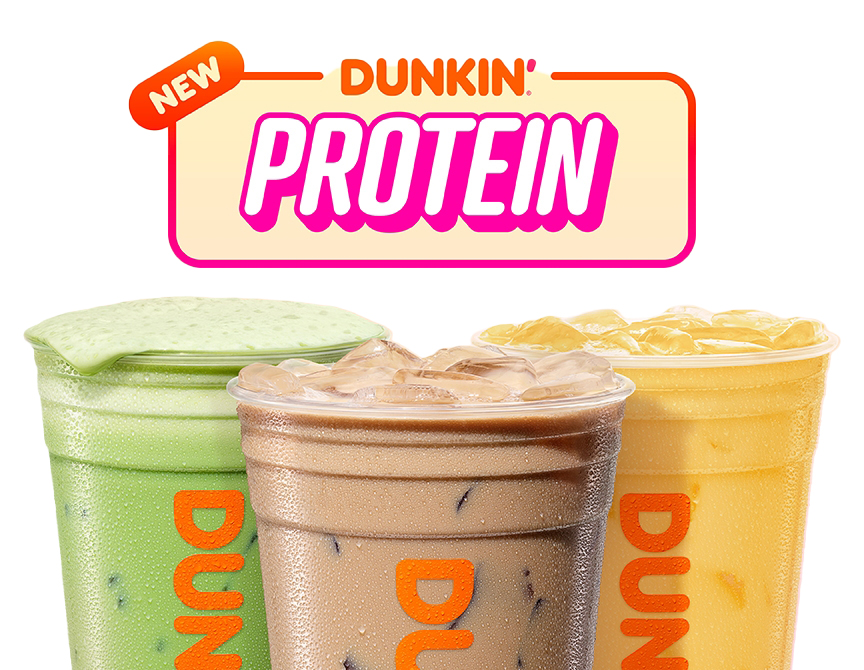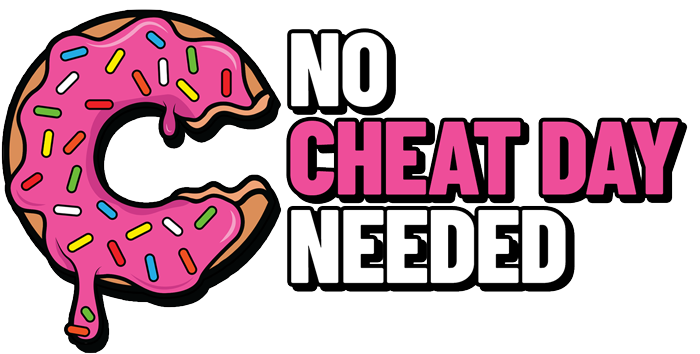High-Protein Biscoff Ice Cream Bars
If you’ve never had Biscoff ice cream bars before, you need to run out to the store to buy them immediately.
I just recently discovered them, but they are my absolute favorite dessert of all time.
Now, I don’t particularly like to mess with perfection. But, I wanted to challenge myself to see if I could recreate these Biscoff ice cream bars with my own healthy spin.

I didn’t have very high expectations, but wouldn’t you know, this has become one of my favorite recipes of all time.
You won’t have to sacrifice any flavor for this healthier version, either. While nothing will ever beat the regular Biscoff ice cream bars, our homemade version is extremely close, healthy or not.
I went through 5 different test batches of this recipe until I got it just right, and I ate every single ice cream bar that I made, so that should tell you just how much I enjoyed them.
One regular Lotus Biscoff Ice Cream Bar is 310 calories, 21g fat, 23g of sugar, and a measly 2g protein.

Our homemade version is 255 Calories, 16g Fat, 20g Carbs (9g Sugar), and 12g Protein.
When I first made this recipe, I chose to not use high-protein ice cream because I wanted them to stay nice and soft inside.
However, since I first created this recipe, Halo Top has reformulated and become much softer, so I’ve made them with Halo Top as well.
In either case, it’s not a ton of ice cream, so the extra protein is very minimal- I recommend using any ice cream you like the taste of!
How to make Biscoff Ice Cream Bars
These Biscoff ice cream bars have three components:
- The vanilla center with
- The soft layer
- The white or coating
Start by making the cookie butter ice cream by adding any light vanilla ice cream to a bowl. For my ice cream bars, I decided to go with Breyers No Sugar Added vanilla ice cream, but any ice cream will work.
You can leave the ice cream out at room temperature to soften it, but if you’re impatient like I am, you can microwave the bowl of ice cream for about 15 seconds to soften.
Crumble up one Biscoff cookie and mix that into your softened ice cream.

Add the softened ice cream to a popsicle mold (mine makes 3 popsicles) and then add to the freezer for 2-3 hours to allow the ice cream bars to fully harden.

You’ll know they are ready when you can pop them out of the silicone mold without any ice cream being left behind.
At this stage, if you want a low-calorie treat, you can enjoy a with , which has a surprisingly large amount of Biscoff flavor considering the small amount used.

Since I wanted these ice cream bars to closely resemble the actual Lotus Biscoff Ice Cream Bars, I decided that I needed to trim these popsicles down a bit.
This step is completely optional, but it will give you an authentic shape AND bring the calorie count down a little bit (about 40 calories per ice cream bar).
Use a sharp knife to cut the sides off of the popsicle so you are left with a skinnier ice cream bar.

Side note: the leftover ice cream slivers you cut off make excellent snacks!
Return the trimmed popsicles to the freeze and make the Protein Cookie Butter. You can find that full recipe here, but it’s truly just a matter of blending together Biscoff cookies, protein powder, and a little bit of almond milk.

The only difference for this recipe is that we’re going to use a little bit of extra milk in order to create a thinner cookie butter that we can cover the ice cream bars with.
If you do not want to make your own high-protein , you can use or even ‘s version in its place. Using will raise the calories, but it will still be delicious!
Use a spoon or butter knife to spread the cookie butter all over the popsicles. It’s okay if it’s not perfectly smooth.

Add some crushed Biscoff cookie crumbs around the entire popsicle, then lay the ice cream bars on a sheet of parchment paper.

Add these cookie butter-covered ice cream bars to the freezer for one more hour to allow the cookie butter layer to completely solidify.
If you’d like to eat the ice cream bars at this stage, they are still a delicious treat, but the chocolate coating really takes these over the top.

Depending on which flavor you’d like to go with (milk chocolate or white chocolate) mix up the ingredients in a bowl to create the chocolate coating just like in my Choco Taco Recipe.
Spoon the chocolate coating over the top and allow it to drip down the sides of the ice cream bar, then use the spoon to spread the coating all around the bar until it is completely covered in chocolate.

The coating acts as a “magic shell,” so it will only take about 30 seconds for it to be fully set.
Dig in right around, or store these Biscoff ice cream bars in a freezer bag in the freezer until you are ready to enjoy.

My ice cream stays nice and soft, but if you use vanilla ice cream that tends to freeze a little harder, you can leave these ice cream bars out for a few minutes to soften before eating.
More healthy ice cream recipes to make
For me, it doesn’t matter what the weather is like- I want ice cream every night. If you’re like me, here are some of my favorite healthy ice cream recipes to help tackle those cravings:
- Healthy No-Churn Soft Serve Ice Cream
- Healthier Homemade Choco Tacos
- High-Protein “Fried” Ice Cream
- Healthy Pumpkin Pie Ice Cream Without An Ice Cream Maker

High-Protein Biscoff Ice Cream Bars
Biscoff ice cream bars are my favorite dessert on the planet, but they come with a hefty price tag for a small box. I wanted to create my own version at home with a healthy high-protein spin, and I think this may just be my favorite recipe of all time! You can go with the white chocolate version OR milk chocolate depending on your mood.
Ingredients
Ice Cream Filling:
- 150g Light or High-Protein Vanilla Ice Cream
- 1 Biscoff Cookie
Cookie Butter Layer (you'll only use half for this recipe, but it's easier to make a full batch):
- 8 Lotus Biscoff Cookies
- 31g (1 Scoop) PEScience Snickerdoodle (or Vanilla) Protein Powder
- 1/4 Cup + 1 Tbsp Milk of Choice
- 2 Extra Biscoff Cookies for Crumbling
White Chocolate/Vanilla Coating
- 35g (2.5 Tbsp) Coconut Oil
- 20g (2/3 Scoop) Vanilla Protein Powder (use code "Matt" to save)
- 5g Powdered Sugar Substitute
Chocolate Coating
- 35g (2.5 Tbsp) Coconut Oil
- 20g (2/3 Scoop) Chocolate Protein Powder (use code "Matt" to save)
- 5g Powdered Sugar Substitute
- 5g Cocoa Powder
Instructions
- Weigh out 150g of vanilla ice cream into a bowl (each popsicle mold holds about 50g). Leave it out to soften, or if you're impatient like me, toss the bowl into the microwave for about 20 seconds. Don't worry, it's OK if it becomes a little bit soupy. Break up 1 Biscoff cookie and mix it into the ice cream.
- Add the softened ice cream into your popsicle mold. I bought this one off Amazon which makes 3 popsicles.
- Let these popsicles harden in the freezer for at least 2 hours. Longer is better, so it's easiest to just let them freezer overnight, but 2-3 hours should be long enough. You'll know they're good to go when you can pop them out of the popsicle mold. (Side note: if you want a low-calorie treat, these are delicious at this stage! Even just 1 Biscoff cookie spread out over 3 popsicles adds so much flavor).
- Use a knife to cut the sides off the bars to create a skinny popsicle shape. This part is obviously optional, but I wanted these to mimic the long skinny shape of the regular Biscoff bars, so this made the shape & size much closer.
- Return the trimmed popsicles to the freezer while you make some Protein Cookie Butter. Full recipe for that can be found here, but all you have to do is add 8 Biscoff cookies and a scoop of protein powder to a blender, then add 1/4 cup of milk and blend until it becomes a smooth cookie butter. For this recipe, I added 1 extra tablespoon of milk to make the cookie butter a little bit thinner than the original recipe. Then you can take a spoon or butter knife and coat each of your popsicles (I ended up using exactly half of the cookie butter and putting the rest in the fridge to enjoy later).
- Break up 2 Biscoff cookies and add the crumbs all around the popsicles so they stick to the cookie butter. Lay the popsicles on a sheet of parchment paper and freeze for 1 more hour to allow the cookie butter to harden.
- Prep the chocolate or white chocolate coating by melting the coconut oil in the microwave, then whisking in the protein powder and powdered sugar.
- Remove the ice cream bars from the freezer and coat with the chocolate coating. Using a spoon, drizzle it right over the top so it drips down the sides, then use the spoon to spread the coating until the entire bar is covered. The coating should make enough to cover all 3 popsicles, but if you end up laying it on very thick, you may run out and need to make a tiny bit more.
- The coating should act like a "magic shell" and harden within a minute, so these Biscoff ice cream bars can be enjoyed right away. If you want to save these for another day, store them in a sealable freezer bag until you're ready to eat.
Notes
- I weighed these bars before & after trimming the ice cream into skinnier popsicles, and slicing the sides off ended up cutting out about 20g of ice cream per bar. So the nutrition facts reflect 30g of ice cream in each bar.
- For 3 popsicles, you should use exactly half of the cookie butter recipe, so that portion of the recipe can be cut in half if you do not want any leftover cookie butter.
- I did not test this recipe with whey protein, but it should work in both the cookie butter and the chocolate coating.
Recommended Products
As an Amazon Associate and member of other affiliate programs, I earn from qualifying purchases.
Nutrition Information
Yield 3 Serving Size 1 Ice Cream BarAmount Per Serving Calories 255Total Fat 16gCarbohydrates 20gProtein 12g




